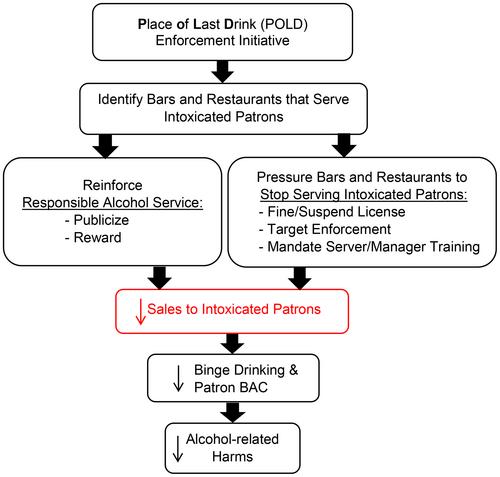Does a place of last drink initiative affect the likelihood of alcohol sales to obviously intoxicated patrons?
Abstract
Background
Although the sale of alcohol to obviously intoxicated patrons (i.e., overservice) is illegal in 48 U.S. states, the likelihood of overservice at bars and restaurants has exceeded 80% across multiple studies, states, and decades. Place of last drink (POLD) enforcement is one proposed strategy to address alcohol overservice. When law enforcement agents respond to an alcohol-related incident, they ask the individuals involved where they had their last alcoholic beverage. POLD information is recorded and ideally systematically reviewed to identify locations that are frequently places of last drink. Law enforcement or other agencies may follow up with or penalize the alcohol license holder at these locations. We compared the likelihood of overservice in communities conducting POLD with communities that did not conduct POLD in Minnesota.
Methods
Pseudo-intoxicated patrons acted out signs of obvious intoxication while attempting to purchase alcohol at 396 bars and restaurants in 26 communities conducting POLD and 26 comparison communities. We calculated rates of alcohol sales to the pseudo-intoxicated patrons overall and in POLD communities versus comparison communities.
Results
The overall sales rate to the pseudo-intoxicated buyers was 98%. Rates of sales were 99% at establishments in POLD jurisdictions and 97% in comparison jurisdictions. There were no common characteristics, such as perceived gender/age of the server/bartender or crowdedness of the establishment, among the seven establishments that refused alcohol service.
Conclusions
Our study shows that, as currently implemented in Minnesota, POLD does not reduce the overservice of alcohol at a jurisdiction level. More research is needed to identify interventions that yield sustained reductions in the overservice of alcohol.

| 公司名称 | 产品信息 | 采购帮参考价格 |
|---|

 求助内容:
求助内容: 应助结果提醒方式:
应助结果提醒方式:


